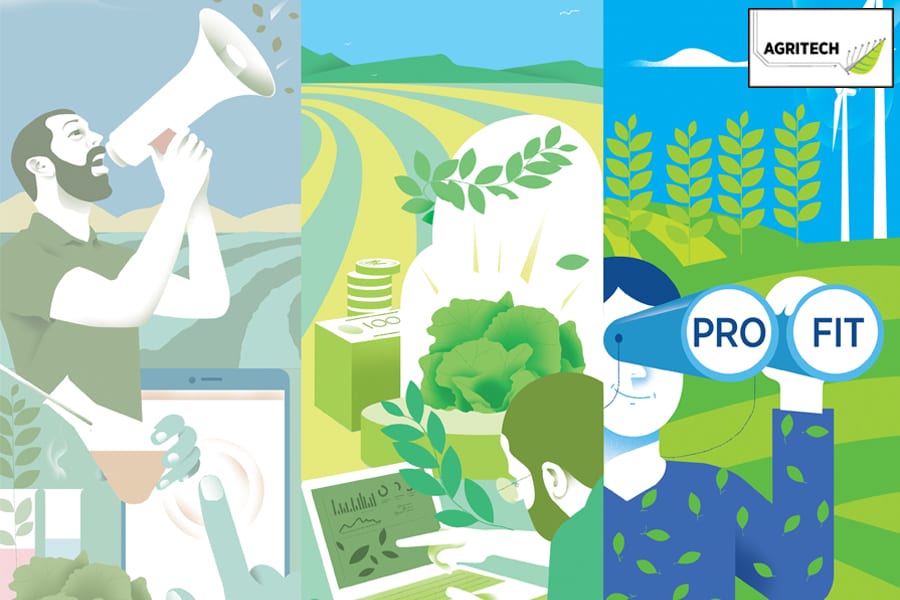
Agritech startups have arrived. What will it take to scale impact and profits?
After staying unnoticed for over a decade, the agritech sector came into focus during the pandemic when startups saw exponential growth curves riding on accelerating technology adoption by farmers. But what does the future look like?—Hemendra Mathur, venture partner, Bharat Innovation Fund, and cofounder, ThinkAg, writes
 Talking of startups’ contribution to Indian agriculture, it is small in dollar terms (combined GMV of all agri startups is less than $10 billion) but holds huge promise in the times to come
Illustration: Sameer Pawar
Talking of startups’ contribution to Indian agriculture, it is small in dollar terms (combined GMV of all agri startups is less than $10 billion) but holds huge promise in the times to come
Illustration: Sameer Pawar

The Indian food economy (domestic consumption and international trade), estimated to be $800 billion, is likely to surpass $1 trillion in the next three to four years. The foundational layer of this food economy is India’s significant production advantage in agriculture (approximately 1 billion tonnes of food produced and consumed a year). However, the farmer’s share in consumer price continues to be low, at 35 to 40 percent (farmgate output of agri and food products is estimated at $300 billion to $350 billion) and the majority share of the food economy goes to post-harvest participants in the value chain, including processors, distributors, traders and retailers.
More than the size, the importance of the food economy lies in the fact that it is one of the few sectors that connects ‘Bharat’ to ‘India’, with about 150 million farmers from 600,000-plus villages growing food to feed over 1.3 billion Indian consumers and exporting (approximately $50 billion) to the rest of the world. With just 20 percent share of the Indian GDP, agriculture continues to be the primary source of livelihood for about 800 million people in rural India.
The food supply chain is characterised by multiple layers (five to eight) between the farmer and the consumer. The multi-layering adds to fragmentation, cost and wastage. However, despite its complexity, the chain continues to be resilient, as proven during the unprecedented Covid-19 pandemic. The coming together of farmers, farmer groups, traders, aggregators, transporters, distributors, retailers, industry, startups and the government at multiple levels in a pandemic situation to keep the food supply chain running is nothing short of a miracle.
Talking of startups’ contribution to Indian agriculture, it is small in dollar terms (combined GMV of all agri startups is less than $10 billion) but holds huge promise in the times to come. The origin of the Indian agri-tech sector, which catapulted the startup culture and the use of digital technology, can be traced back to 2010. While the agritech sector has remained unnoticed for over a decade, agritech startups got the attention and respect they deserved during the pandemic, on the back of exponential growth curves riding on accelerated technology adoption by farmers.










